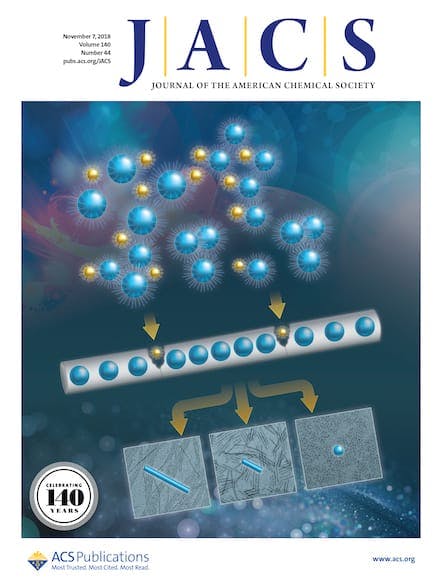Synthetic organic chemistry pioneer Gilbert Stork is dead at the age of 95. Stork was the former Eugene Higgins Professor of Chemistry Emeritus at Columbia University. He is known for his work in the total synthesis of natural products and his contributions to enamine chemistry. Gilbert Stork was the author of more than 160 papers […]

Synthetic organic chemistry pioneer Gilbert Stork is dead at the age of 95. Stork was the former Eugene Higgins Professor of Chemistry Emeritus at Columbia University. He is known for his work in the total synthesis of natural products and his contributions to enamine chemistry.
Gilbert Stork was the author of more than 160 papers in ACS journals over 70 years. He published his final paper in Organic Letters last month. That paper, “Synthetic Study toward Total Synthesis of (±)-Germine: Synthesis of (±)-4-Methylenegermine, ” contains a footnote that shows a glimmer of the personality that endeared him to so many in the chemistry community. “At this point, we realized that we did not have enough material (a few milligrams) to go through the several steps for this conversion” he writes. “One would have to restart the whole synthesis. But I (G.S.) am now 95 years old.”
Gilbert Stork was known for achieving the first stereoselective total synthesis of the antimalarial quinine in 2001, despite the “quasi-universal impression” that quinine was synthesized in 1944. He also developed the Stork enamine alkylation.
“Few people in the field of organic chemistry command such deep and unanimous reverence as Gilbert Stork. His impact on the field of synthesis is hard to overstate. His research, spanning an incredible eight decades, makes up the very fabric of our field,” said Journal of the American Chemical SocietyAssociate Editor Phil S. Baran. “There is no escaping his influence if you are engaged in synthesis. From hypotheses that shaped how we think about terpene biosynthesis to countless reagents and intermediates used daily, they all bear Stork’s fingerprints. Indeed, much of the basic strategies and tactics used in modern retrosynthetic analysis can be traced to the teachings of Gilbert Stork, such as radical cascade reactions, annulations, and enolate chemistry to the very act of stereospecific synthesis. Although we mourn his passing we are cognizant of the fact that his legacy and spirit are eternal and everlasting with much of his groundbreaking work appearing within the pages of JACS as early as 1945.”
“Stork’s lectures, most often delivered with chalk, were legendary!” states Amos Smith, III, Editor-in-Chief of Organic Letters. “At nearly every turn his deep analytical discussion would evolve to provide “gold nuggets” of wisdom on the synthetic question at hand.”
Gilbert Stork liked to joke about his lab habits. He claimed to make diethylaluminum cyanide while wearing a tuxedo on his birthday. Once he dissolved an expired steak in a bath of nitric and sulfuric acid, only to fret that he was “going to produce a pile of nitroglycerine and blow up the entire building with my steak.”
Gilbert Stork was recognized by the ACS throughout his career, winning such awards the 1957 Award in Pure Chemistry of the American Chemical Society, 1967 ACS Award for Creative Work in Synthetic Organic Chemistry, and 2005 Herbert C. Brown Award.
